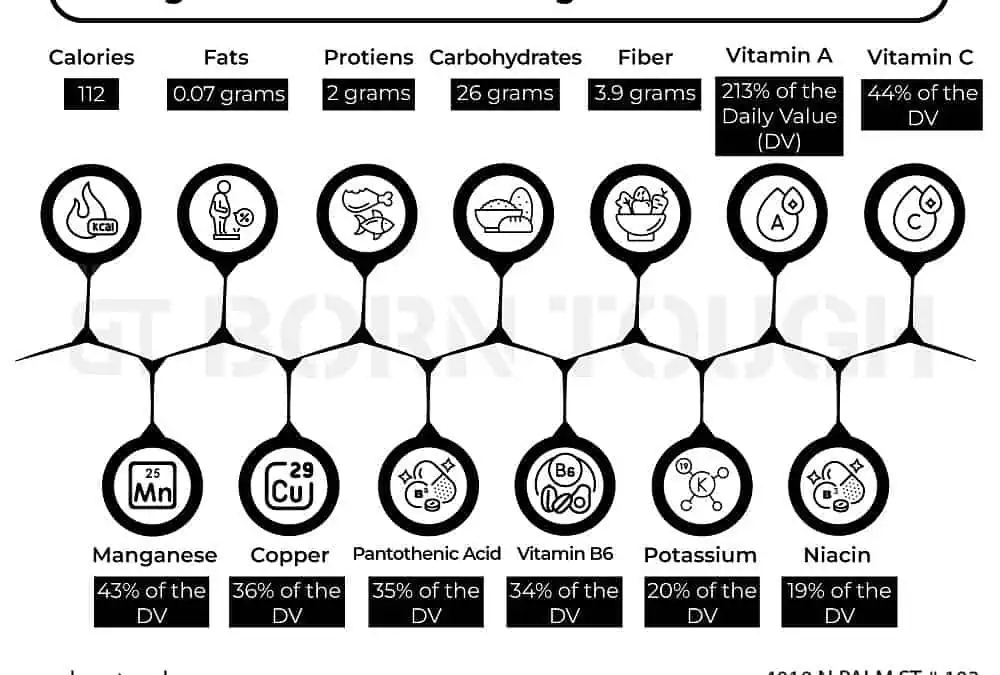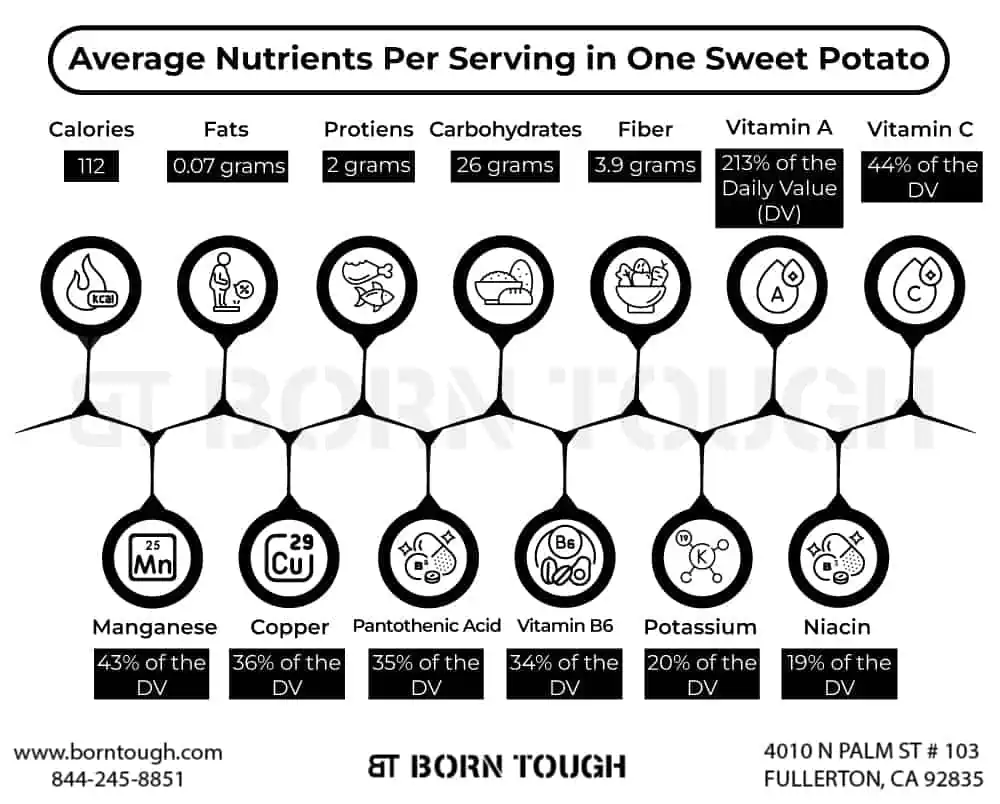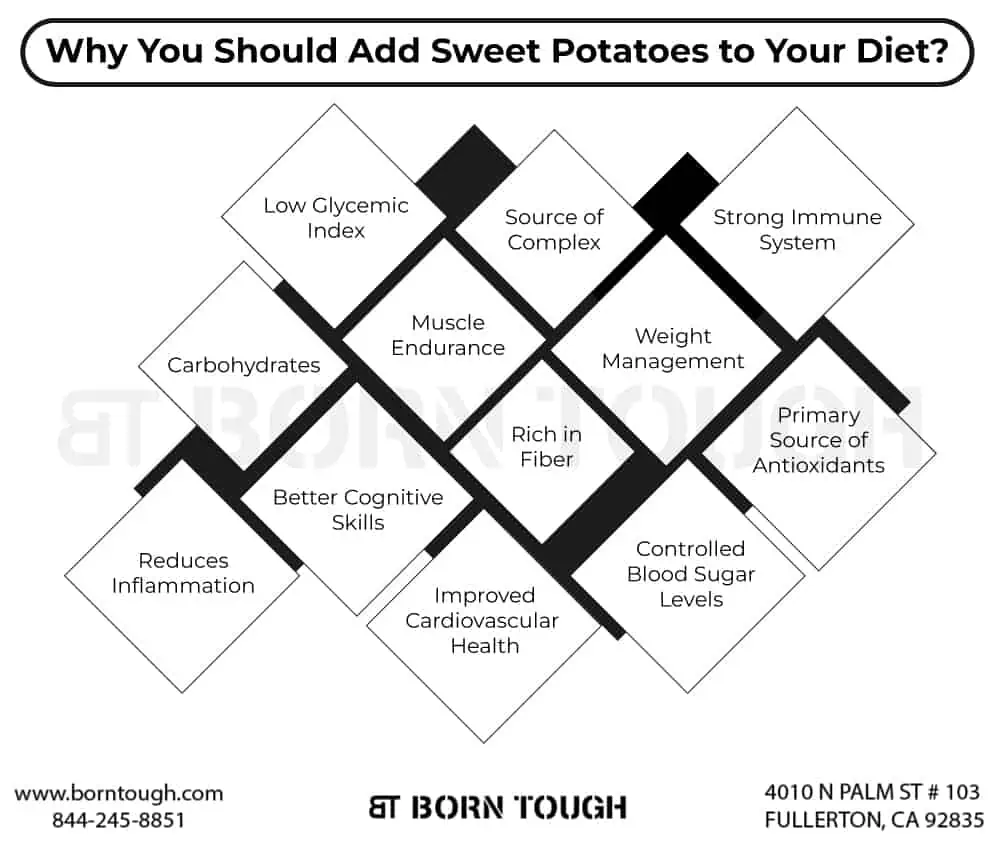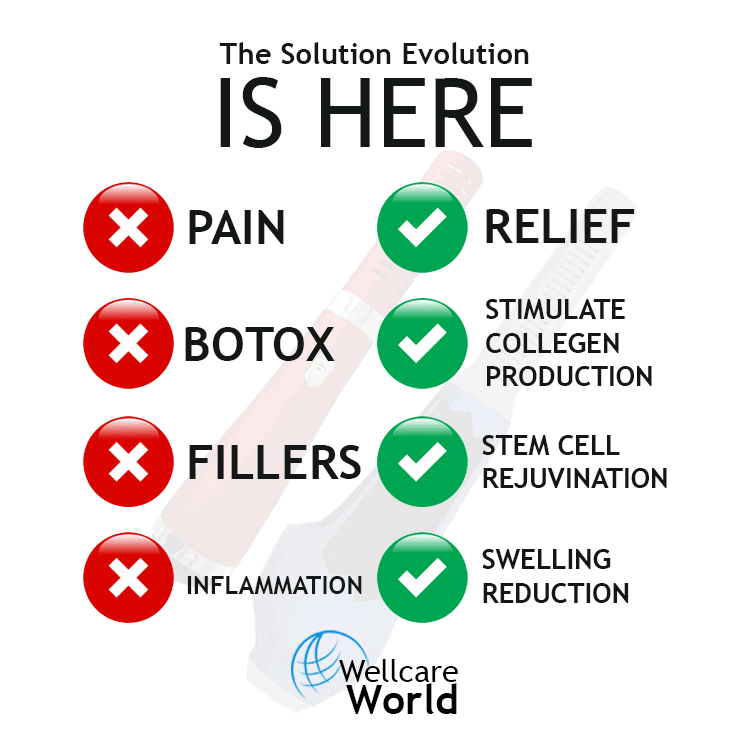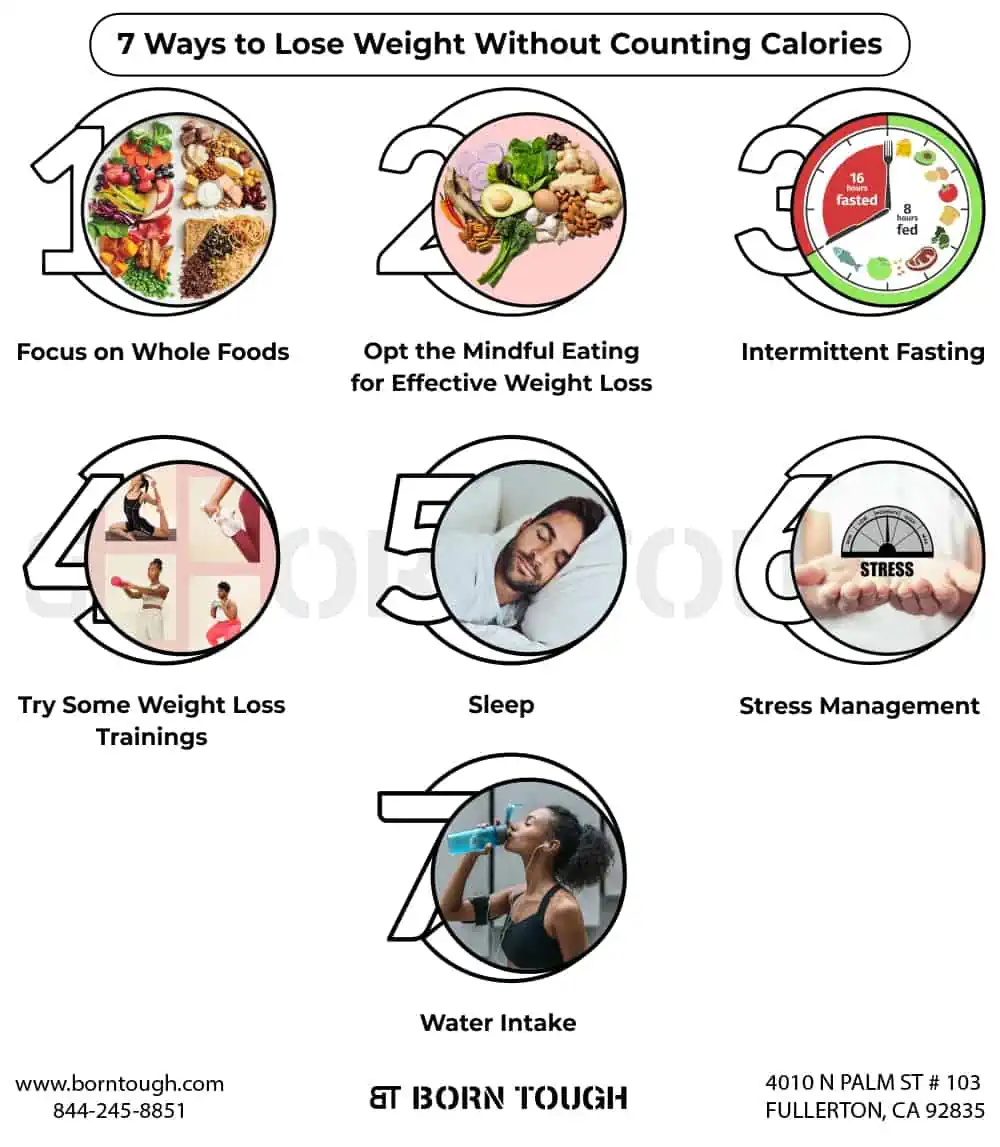
1. Focus on Whole Foods

When it comes to losing weight, one of the best things you can do for yourself is to focus on whole foods. In their natural state or with minimal processing, whole foods are as close to their natural state as possible.
They’re rich in nutrients, fiber, and healthy fats, which make you feel full and replenished. It also provides nutrients that your body needs for survival.
“The only way to keep your health is to eat what you don’t want, drink what you don’t like, and do what you’d rather not.” – Mark Twain
Processed foods, on the other hand, are often high in calories, sugar, and unhealthy fats. They lack the nutrients and can cause spikes in blood sugar levels, leading to cravings and overeating.
To incorporate more whole foods into your diet, follow these steps:
- Add lean proteins, whole grains, and fruits into your diet.
- Swap out processed snacks for fresh fruit, veggies and hummus.
- Instead of ordering takeout, make a homemade stir-fry with plenty of colorful veggies and lean protein.
Eating whole foods can also be a fun and enjoyable experience because it allows you to play with different veggies. For example, you can experiment with different flavors and cooking techniques to make your meals more interesting. Roasting veggies with olive oil and seasoning can bring out their natural sweetness and add depth to your dishes.
Another benefit of having whole foods is that it will save money. Whole foods are cheaper than processed foods, especially if you shop in season and in bulk.
“Those who think they have no time for healthy eating will sooner or later have to find time for illness.” – Edward Stanley
Remember, incorporating more whole foods into your diet is a gradual process. Start by making small changes and gradually add more whole foods over time. This way, you can create healthy eating habits that are sustainable in the long term.
2. Opt the Mindful Eating for Effective Weight Loss

Another effective way to lose weight without counting calories is to focus on mindful eating. Mindful eating is about paying attention to your body’s signals and being present in the moment while you eat.
Try to slow down your eating and savor your food. Take the time to appreciate your meal’s flavors, textures, and aromas. You will feel more satisfied and less likely to overeat.
Another critical aspect of mindful eating is attention to your hunger and fullness cues. Eat when you’re hungry and stop when you’re full. This may seem simple, but it can be challenging in a world constantly bombarded with food cues and distractions.
Try eating without distractions to help you tune into your hunger and fullness cues. Turn off the TV, put down your phone, and focus solely on your food. You can be more present and better listen to your body’s signals.
Mindful eating aid in identifying emotional triggers that may be causing you to overeat. If you notice that you tend to reach for food when stressed or bored, try finding alternative ways to cope with these emotions, such as taking a walk, calling a friend, or practicing deep breathing.
“To keep the body in good health is a duty… otherwise, we shall not be able to keep the mind strong and clear.” – Buddha
Implementing mindful eating into your daily routine aids in weight loss. You can make healthier food choices by paying attention to your body’s signals and being present at the moment while you eat.
3. Intermittent Fasting

Intermittent fasting is a weight loss strategy involving alternate fasting and eating periods. This approach is effective for weight loss, improving blood sugar control, and reducing inflammation.
There are different approaches to intermittent fasting. One common method involves 16 hours of fasting and eating for 8 hours. For example, you may eat all your meals between 12 pm and 8 pm and then fast from 8 pm until the next day at noon.
Intermittent fasting reduces your overall calorie intake and increases your body’s ability to burn fat for energy. When you fast, your body has to use stored energy (fat) to keep you going, which is beneficial for weight loss.
“Investing in your health will produce enormous benefits in all areas of your life.” – Tom Rath
Keep in mind that intermittent fasting is not appropriate for everyone. It has many health benefits, such as reducing inflammation and improving insulin sensitivity and brain functioning. It’s important to talk to your healthcare provider before starting any new diet or weight loss program, especially if you have a history of eating disorders or other medical conditions.
4. Try Some Weight Loss Training
There is a lot of weight loss training. Some of the most common and beneficial training are:
4.1. Resistance Training

Resistance training, also known as strength training or weightlifting, is a beneficial option for weight loss. It involves using resistance, such as weights or resistance bands, to challenge and strengthen your muscles.
A benefit of resistance training for weight loss is that it builds lean muscle mass. This can increase your metabolism and help you burn more calories throughout the day, even when not exercising.
Resistance training can also improve your body composition, which refers to the ratio of muscle to fat. You can achieve a more toned and defined physique by increasing your muscle mass and decreasing your body fat percentage.
In addition, resistance training has many other health benefits, including improved bone density, improved body strength and less risk of injury, and improve overall physical function.
When starting a resistance training program, starting with light weights and focusing on proper form and technique is essential. Workout intensity and weight can be gradually increased as you progress.
It is best to use various exercises for different muscle groups. This can prevent boredom and keep your workouts challenging and effective.
Finally, giving your muscles time to rest and recover between workouts should be preferred. It can prevent injury and allow your muscles to rebuild and strengthen.
4.2. High-Intensity Interval Training (HIIT)

High-Intensity Interval Training (HIIT) is about short bursts of high-intensity activity followed by rest periods or lower-intensity activity. This type of workout is known for its effectiveness in burning calories and improving cardiovascular fitness.
During a HIIT workout, you push yourself to your limits during high-intensity intervals, typically 20-30 seconds, before taking a brief rest period. This cycle is repeated for several rounds, typically 20-30 minutes.
One of the benefits of HIIT is its efficiency. Because of the high intensity of the workout, you can burn more calories in a shorter time than traditional steady-state cardio workouts. Additionally, the afterburn effect of HIIT burns calories for hours after your workout.
HIIT can also improve cardiovascular health by increasing heart rate and oxygen utilization. This is also useful for boosting endurance and overall fitness.
When starting a HIIT program, it’s better to start slowly and gradually increase the intensity and duration of your workouts. Listening to your body and taking breaks.
It’s essential to note that HIIT is a high-impact workout and may not be suitable for everyone. Consult a healthcare professional before starting a HIIT program if you have any underlying health conditions or injuries.
5. Sleep

Sleep is vital for maintaining a healthy lifestyle and aiding in weight loss. Lack of sleep decreases the production of the hormone leptin, which regulates your appetite and tells your body when to stop eating. It also causes stress, leading to overeating and weight gain.
Aim for 7-9 hours each night to ensure you get enough sleep. Establish a bedtime routine and try to go to bed and wake up every day at the same time.
Avoid screens and stimulating activities before bed, and create a relaxing environment in your bedroom.
Try some relaxation techniques if you struggle with sleep. They can promote better sleep. Make sure to finish your workout at least a few hours before bedtime to let your body wind down.
You’ll be better equipped to stick to your weight loss goals by prioritizing sleep and getting enough rest each night. So, consider the power of a good night’s sleep to attain the desired weight loss goals.
6. Stress Management

In today’s fast-paced world, stress has become a part of everyone’s life. High-stress levels can negatively impact your health and contribute to weight gain.
Therefore, stress management is an essential component of weight loss. There are several ways to manage stress, including exercise, meditation, and deep breathing.
One of the best methods to deal with stress is through exercise. Endorphins, the brain’s ‘feel good‘ hormones, are released. Exercise can be anything from a quick walk to a full-body workout. What you do doesn’t matter if you get moving and get your heart rate up.
Meditation is another effective stress management technique. It calms the mind by reducing stress and anxiety levels. This entails soothing your mind and concentrating on your breath or a particular word or sentence. Several meditation apps like Focus Calm can help you in this regard.
Deep breathing is a simple yet effective way to manage stress. It can be done by inhaling deeply through your nostrils and exhaling through the mouth. Your body and the psyche are relaxed through this simple but effective exercise.
Other stress management techniques include journaling, talking to a friend or therapist, and practicing gratitude. Journaling involves writing down your thoughts and feelings, which aids in stress reduction.
Talking to a friend or therapist can provide emotional support and guidance. It regulates your emotions to help in weight loss.
Moreover, try to be grateful. Being grateful for the good things in your life is part of the practice of appreciation. So, try to appreciate things and avoid exaggeration.
7. Water Intake

Water is vital for life, and it is also supportive of weight loss. Drinking enough water is as important as healthy eating and regular exercise when losing weight. Adequate water intake is necessary for proper hydration, metabolism, and digestion.
Interestingly, drinking water before meals can reduce appetite and lead to lower calorie intake, which ultimately contributes to weight loss. Additionally, increasing water intake flushes toxins, reduces bloating, and improves skin health.
Experts recommend drinking at least 8-10 glasses of water daily, but individual needs may vary depending on activity level, climate, and overall health status. The hue of your urine can accurately determine your hydration level.
Clear or pale yellow urine indicates proper hydration, while dark yellow urine may signal dehydration.
Water-rich foods such as fruits and vegetables can increase water intake. Foods such as watermelon, cucumbers, strawberries, and spinach have a high water content and can keep you hydrated throughout the day.
In addition to plain water, herbal teas, and infused water can also be great options for staying hydrated. It adds flavor without adding sugar and calories like sodas and juices.
8. FAQs
8.1. How Do I Stay Fit Without Counting Calories?
Incorporate a balanced diet with plenty of whole foods and regular exercise, including strength training and cardiovascular exercise. Do not compromise on your body and plan accordingly for the desired outcomes.
8.2. Will One Bowl of Ice Cream Ruin A Diet?
One bowl of ice cream won’t ruin a diet. 142 grams of Vanilla Ice Cream contains about 241 calories. However, consuming more calories than burned can impede weight loss or maintenance progress.
8.3. Can You Count Calories Without Weighing Your Food?
While not as precise, using portion control, measuring cups and spoons, and estimating serving sizes based on familiar objects can provide a rough estimate of calorie intake.
8.4. How Often Can I Eat Chocolate If I’m Trying To Lose Weight?
It depends on the quantity and frequency of chocolate intake. Moderation is the key. You can take a moderate amount in case of severe cravings. 50 grams of dark chocolate contains about 273 calories. Eating a small portion of chocolate in a balanced diet can sustain weight loss.
9. Last to Say
Taking care of your health should be a top priority in your life. Maintaining a healthy weight is a helpful way to keep fit and healthy. You can do this by focusing on whole foods, mindful eating, intermittent fasting, resistance training, high-intensity interval training, and better sleep. All these things can affect your weight loss and reduce the worry about the calorie count. So you can quickly get the desired lean and toned physique.














